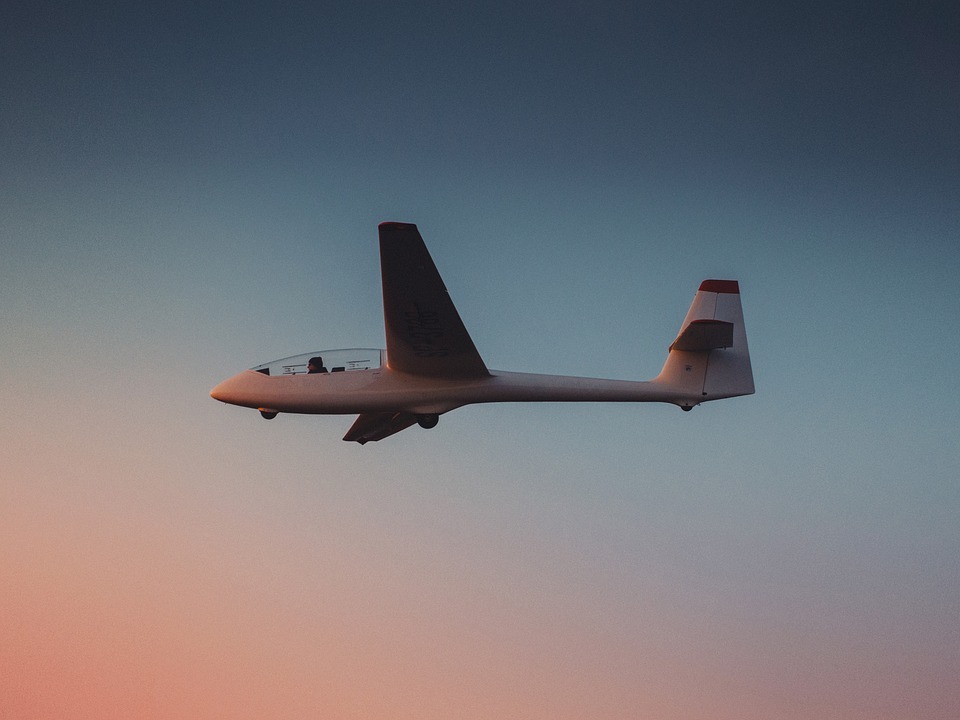Gliders, also known as sailcraft or sailplanes, are a kind of aircraft that stays in the air without any engine help. Unlike a traditional plane that uses a machine to generate lift, the glider gains velocity with the help of another support system, such as a car launch mechanism or a tow plane. Once a glider is up in the air, it rides the air currents in order to maintain its velocity, and then the pilot will have to navigate a smooth landing. In this article, we are going to differentiate glider planes and airplanes.
How are they Powered?
The main difference between a glider and an airplane is its power source. An airplane has an internal combustion engine which helps it generate power to move forward and generate lift. On the other hand, a glider has no engine. Instead, it relies on an external mechanism to attain initial velocity that produces lift, but when it comes to hang gliders, the person who operates the glider will have to run along the side of a hill or a cliff. Bigger sailplanes and hang gliders openly rely on the mechanical start. For example, the sailplane can be attached to a tow airplane that drags it up into the air. When the sailplane has enough lift to stay in the air, the line connecting the two crafts will be disconnected. Aside from a tow airplane, a car can also be used as a towing device.
Wing Aspect Ratio
Compared to airplanes, gliders have high aspect ratio wings, which means that they have narrower and longer wings. High aspect ratio wings tend to bend more than shorter wings, and this means that they need to be created with more robust designs. Because gliders are light, the bending of their wings is not that much of a problem. On the other hand, a high aspect ratio wing design would be considered impractical when it comes to heavier aircrafts such as airliners.
High aspect ratio wings are also more prone to wing-warping, and since gliders fly at slow speeds, wing-warping is not a problem. Besides that, high aspect ratio wings are not easily maneuvered because they have a higher inertia moment. Most airports have a size limit when it comes to the aspect ratio of an aircraft. For example, the Boeing 777 has an aspect ratio of nine; if it had been bigger than that, the aircraft would not be able to park near another plane on the ramp. Its wings would also hangover the taxiways when it’s taking off and when it’s landing.
Control Surfaces
Just like any other airplanes, gliders use a rudder, ailerons, and an elevator to fly. The glider’s flaps are fitted in order to control descent rates by increasing lift and producing drag. Today, most gliders have spoilers or airbrakes, which drastically disrupt the airflow over the wings, increasing the drag and reducing the lift.
Another difference between gliders and powered airplanes is that ladders typically have one landing gear that is placed directly below the pilot. Having a single landing gear saves a lot of weight, but what about the glider’s wings when it takes off and lands if it only has one gear? For starters, the glider’s wingtips are protected by small wheels or skids; that is why whenever the glider lands, these wingtips come to rest on the main gear.
Landing
When it comes to landing, there are some critical differences between a powered airplane and a glider. First, gliders cannot add any power if they do not make it to their touchdown zone. While this may seem like a simple thing to do, glider pilots are trained to balance their approach to not land short. Pilots are trained to do it until they are sure they have the field made before introducing the drag through the spoilers or flaps.
The landing itself is not that different from other airplanes, and glider pilots have to flare until the lift decreases, then they will try to touchdown slowly. Given that the gliders only have one wheel, the pilot will have to do a bit of a balancing act to keep the glider’s wings off the ground as long as possible.

